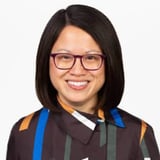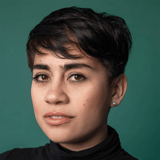Summary
We will be presenting a simple framework or “toolkit” that can be used to align on the “minimum viable participants” for inclusive research when under pressure. Intentional user research often gets classified into two categories. One aims to recruit users based on specific, constraint, or viability-driven criteria, e.g., who is most likely to be an early adopter, most likely to engage, or most likely to find value. This type of research is often seen as “fast,” “focused,” and “targeted,” but may overlook meaningful nuance. The other focuses on diversity, equity, inclusion (DEI), examining historical frameworks, and patterns of exclusion or injustice, and is viewed as “ethical,” “inclusive,” and “deep” but can also be cumbersome for teams under time or resource pressure. However, fast and inclusive research are not mutually exclusive. Contrary to the popular belief that building DEI principles into user research slows us down or is just a “nice to have,” we propose instead, that it can accelerate insights by efficiently identifying the highest risk use cases and revealing beneficial design for all.
Key Insights
-
•
Inclusive research requires time and ethical consideration; it is not truly ‘fast’ or without fear.
-
•
Defaults in design and research, often unexamined, systematically disadvantage marginalized groups.
-
•
Women are disproportionately affected by infrastructure norms due to different mobility patterns.
-
•
Researcher and designer biases stem from unexamined personal and systemic lenses despite formal education.
-
•
Frames are mental models that guide perception and are hard to change, yet evolving them is crucial for inclusive research.
-
•
A three-part process—examining positionality, marginalization/intersectionality, and next steps—helps teams address bias practically.
-
•
Involving diverse stakeholders early, especially in problem framing, improves inclusion and avoids colonialist extraction of knowledge.
-
•
Methods like co-design and diary studies empower participant expertise and build more relevant insights.
-
•
Examples from industry show that focusing on margins brings benefits to a wider user base beyond the marginalized groups.
-
•
Continuous iteration, space for reflection, and shifting power to marginalized voices within teams are essential for sustained inclusive practice.
Notable Quotes
"The title of this talk is a misnomer. This work isn’t really fast, and we shouldn’t do it without fear for the ethical consequences."
"The town of Carlsgo wasn’t consciously disadvantaging women—they were just following a best practice they never questioned."
"Women are 70% more likely to walk, bus, or bike, often combining trips, making standard snow plowing inequitable."
"Designing from our own lens with the best intentions often leads to harmful consequences."
"We all revert back to defaults when pressed for time and under pressure, regardless of our education about bias."
"A frame is a structure our brains use to interpret new information, and underdeveloped frames leave out key perspectives."
"If we can’t see a problem, we can’t try to solve it or understand it."
"It’s not enough to identify our bias; we must bridge the gap by changing how we work to reduce harm."
"We risk perpetuating colonialist and extractionist practices if we don’t center participant expertise and adjust methods accordingly."
"Inclusive design work for marginalized groups often produces benefits for the entire population."
Or choose a question:
















More Videos

"Don't be cool, be good—work hard at managing your teams because they need you to nail it."
Adam Cutler Karen Pascoe Ian Swinson Susan WorthmanDiscussion
June 8, 2016

"Developing trust means showing you understand what it takes to get something shipped, that you’re reliable, and that people can be vulnerable with you."
Peter MerholzThe Trials and Tribulations of Directors of UX (Videoconference)
July 13, 2023

"Governance isn’t about choking creativity, it’s about putting bounds and clarity that enable purposeful collaboration."
Lisa WelchmanCleaning Up Our Mess: Digital Governance for Designers
June 14, 2018

"We need to rethink how our cities are designed and function."
Vincent BrathwaiteOpener: Past, Present, and Future—Closing the Racial Divide in Design Teams
October 22, 2020

"Design your processes around learning, have blameless post mortems and celebrate failures especially."
Brenna FallonLearning Over Outcomes
October 24, 2019

"It’s human infrastructure—community organizing, unions, activists—that saves the day when other infrastructures break down."
Tricia WangSpatial Collapse: Designing for Emergent Culture
January 8, 2024

"Clusters describing demographics and behaviors alone were not enough; we needed emotional personas to find value propositions."
Edgar Anzaldua MorenoUsing Research to Determine Unique Value Proposition
March 11, 2021
"The toy shouldn’t be the goal of play, but a tool or a process that unlocks the unlimited possibilities set forth before a child."
Designing Systems at Scale
November 7, 2018

"Conversion design means to create intentional change."
Erin WeigelGet Your Whole Team Testing to Design for Impact
July 24, 2024
















